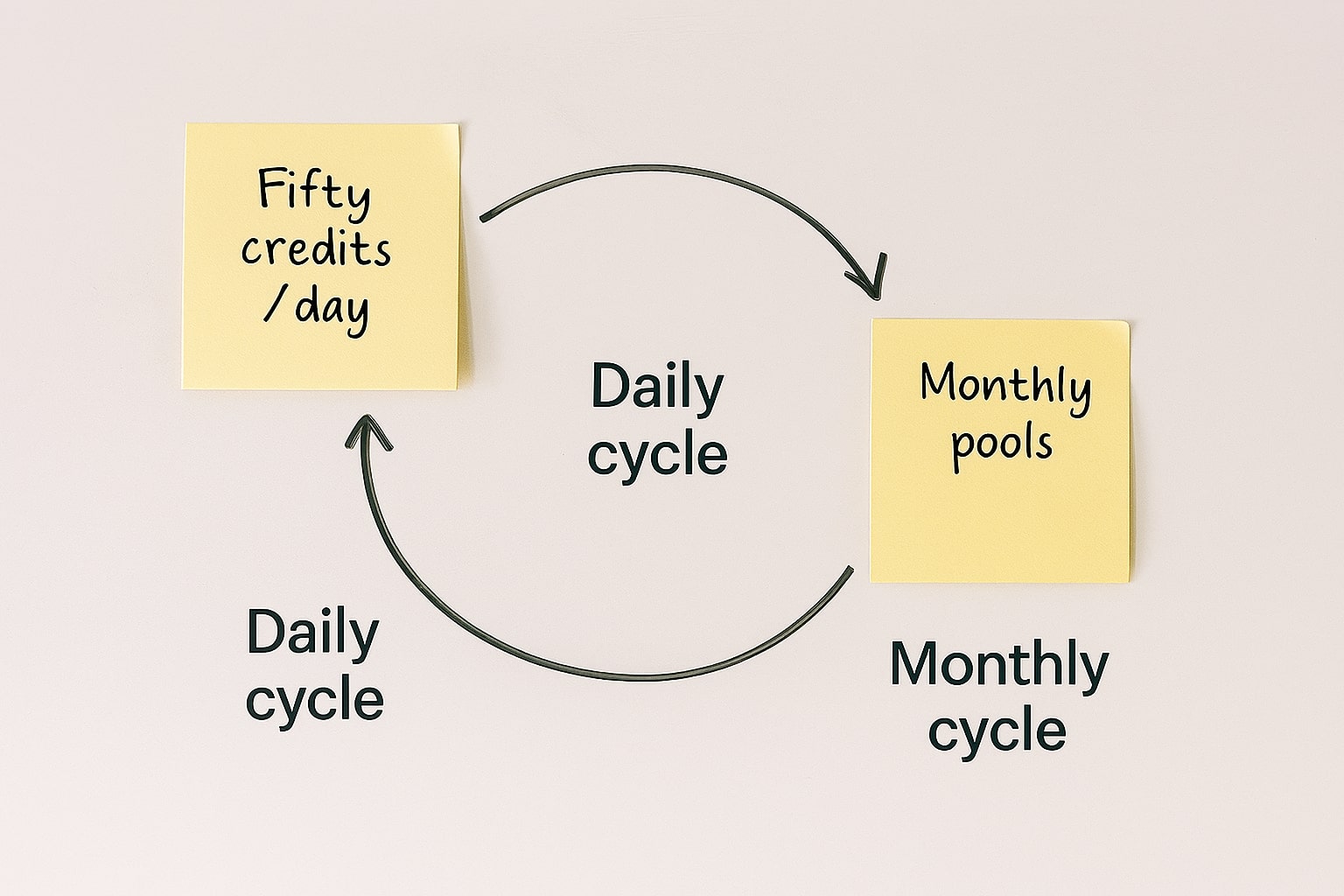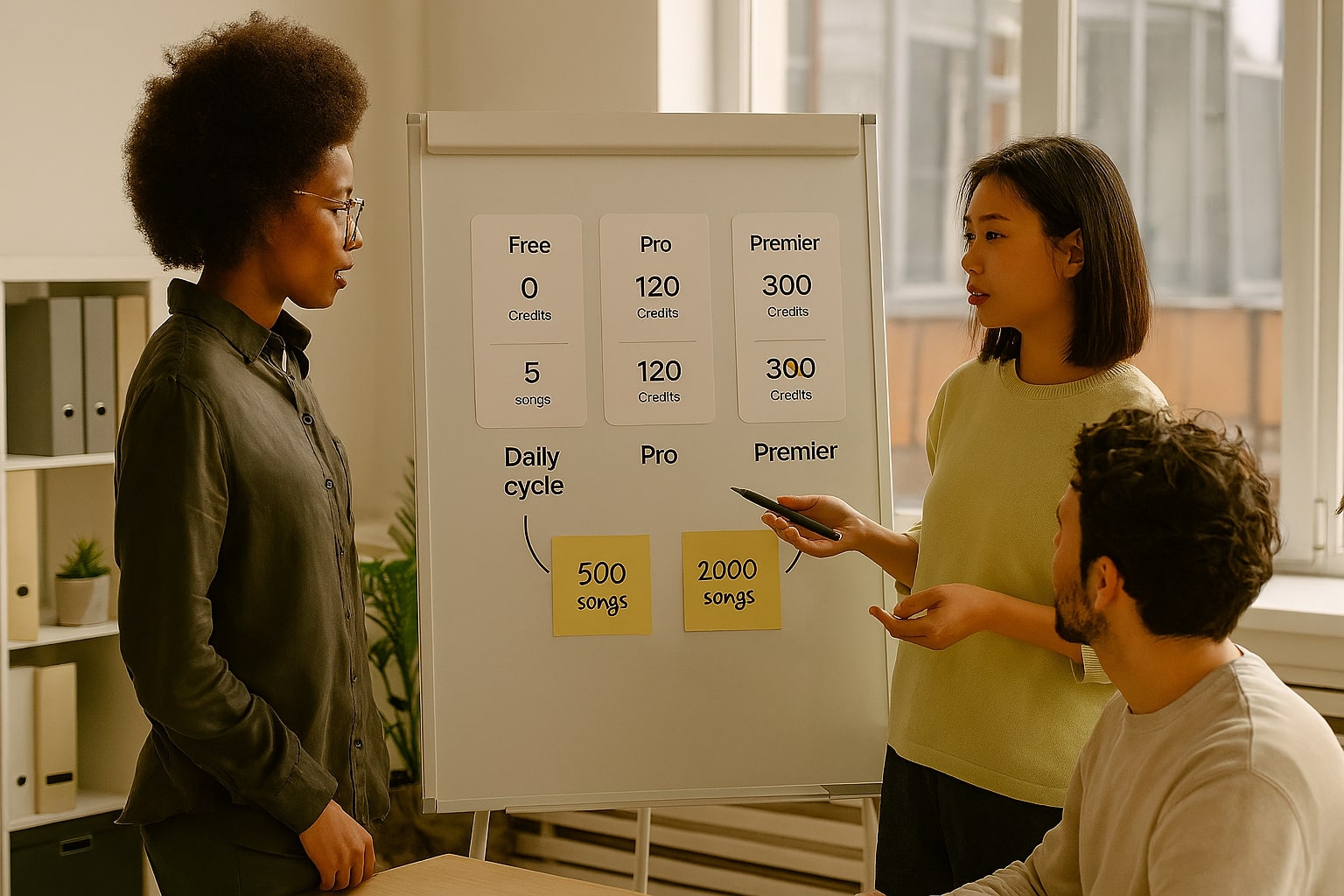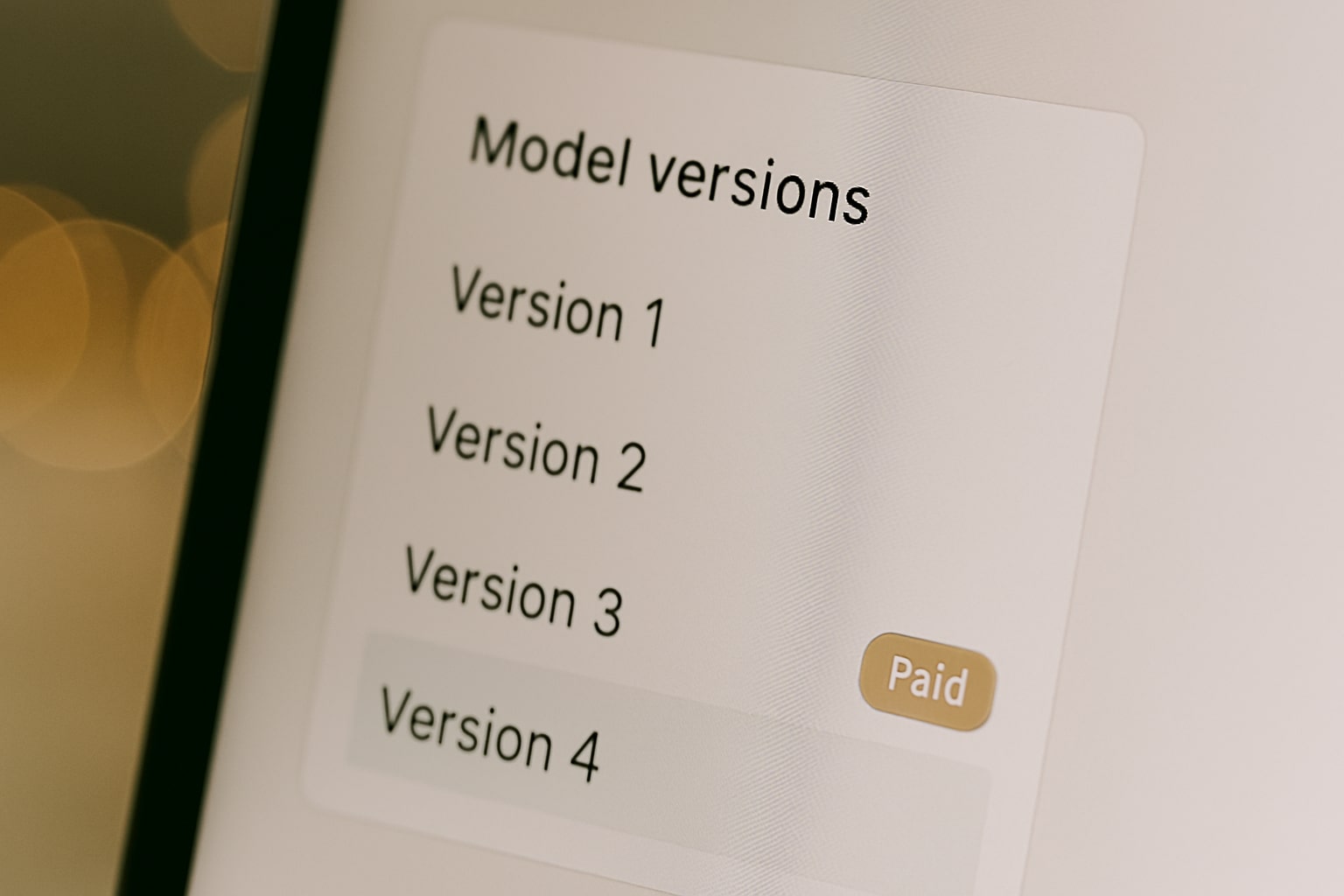Table of Contents
- Suno pricing 2025 at a glance
- More on AI Music Pricing & Rights (Nov 2025)
- How Suno pricing ties to credits, songs, and resets
- Suno pricing and commercial rights, what you can do with your songs
- Which Suno pricing tier creators actually choose
- Real cost per song—and what that means for your budget
- Suno pricing calculator, estimate credits and cost per song
- Suno pricing and credits, a hands-on test you can replicate
- Setup
- Run
- What to look for
- Suno pricing tips to stretch your credits further
- How to decide your Suno pricing tier in five minutes
- Suno pricing and model access, what you get beyond credits
- A brief note on policy and terms
- Wrapping it all into a simple move
Margabagus.com – Suno pricing matters because it decides how many finished songs you and I can release each month, how soon we hit a paywall, and whether our music can be used in monetized projects. The free tier grants 50 credits per day, enough for about ten songs daily, while paid tiers move to monthly credit pools of 2,500 and 10,000, a structure that sets clear output ceilings and incentives for serious creators to upgrade.[2] Suno also states on its Android listing that you can start with ten free songs per day, a simple metric that helps new users estimate practice volume before paying. Plans start at ten dollars per month according to Suno’s help center, with credits replenished monthly on the timestamp of purchase, and included credits do not roll over, which rewards steady production rather than last-minute binges.[3][5][1]
As a creator who values predictable costs, I want pricing that converts neatly into cost per song, and Suno’s credit math does that. Fifty credits produce about ten songs, which implies five credits per full song. That conversion lets you and me compute that Pro delivers roughly five hundred songs per month, while Premier delivers roughly two thousand, then translate that into a clean budget decision for clients, for channels, and for catalog goals.[2]
Suno pricing 2025 at a glance
Below is a practical comparison I use when advising creators on which tier to pick. Prices for Pro and Premier reflect current in-app copy; always confirm live numbers on Suno’s pricing page because it’s dynamic.
As of November 2025, plan names and credit amounts are documented in Suno’s Help Center; USD pricing can change. Confirm the live amount on the Pricing page before purchase. [1][3][7]
| Plan | Monthly price | Credits | Approx songs | Commercial use | Rollover | Notes |
|---|---|---|---|---|---|---|
| Basic (Free) | $0 | 50 credits per day | ≈10 per day | No | Daily reset | Non-commercial; Free runs v4.5-All. Android listing phrases it as “ten free songs/day.” [2][6] |
| Pro | $10 per month* | 2,500 per month | ≈500 per month | Yes | No rollover | Paid model v5; annual ≈20% off (≈$8/mo). Top-ups don’t expire but require active sub. [1][3] |
| Premier | $30 per month* | 10,000 per month | ≈2,000 per month | Yes | No rollover | Higher headroom for teams; paid model v5. Annual ≈20% off (≈$24/mo). [1][7] |
* Pro starting at $10 appears in Suno’s Help Center and in-app pricing. Premier at $30 is shown in official pricing/app-store listings; always confirm the live price on Suno’s page before subscribing. [1][3][7]
Last checked: Nov 2025.
More on AI Music Pricing & Rights (Nov 2025)
How Suno pricing ties to credits, songs, and resets

Credits map, daily resets on Basic, monthly on paid plans
Suno’s design is simple. The free tier grants 50 credits per day, and Suno’s own help article frames that as ~10 songs/day, which implies a typical full song costs about 5 credits. You can use that ratio to plan output: a 100-song month needs ~500 credits. [2]
Included subscription credits do not roll over to the next month. Top-up credits (purchased in addition to a plan) do not expire per Suno’s pricing page, but they still require an active subscription to use—pausing your plan locks those top-ups until you reactivate. [1]
Timing matters. Pro and Premier credits refill one month after your exact purchase timestamp. If you run out early, paid accounts fall back to the same 50 free daily credits pattern as Basic, which can tide you over for small edits before renewal. [5]
Last checked: Nov 2025.
Suno pricing and commercial rights, what you can do with your songs

Commercial use applies to songs created on paid plans
If you want to monetize your tracks, you must be on a paid plan at creation time. Suno’s help center clarifies that Basic is non-commercial, while songs created on Pro and Premier include commercial use (e.g., streaming distribution, monetized channels, direct sales). [4]
One subtle but important line: upgrading does not grant retroactive commercial rights to tracks generated while you were on the free plan. You need to generate while subscribed to secure the licensing position you want. [3]
Suno’s Terms of Service are the final word, and the pricing page flags that commercial use can carry limitations. For client work, keep a copy of the relevant terms in the project folder and document which plan the session used for each deliverable. [9][1]
Not legal advice. Verify ToS before delivery.
Which Suno pricing tier creators actually choose

Most creators land on Pro, heavy publishers go Premier
For most individual creators, I see Pro as the natural fit because it matches a reliable weekly cadence. Two thousand five hundred credits translate to about five hundred full songs per month, which covers daily uploads, demo packs, and a reasonable round of alternates for clients. For teams that publish compilations, deliver stems, or maintain multiple branded channels, Premier’s ten thousand credits prevent mid-month stalls and keep work flowing.
Community signals point in the same direction. An informal poll on the Suno subreddit shows most respondents split between Basic and Pro, with a small minority on Premier, which is consistent with the output needs of hobbyists and small studios. While this is not an official dataset, it tracks what many of us see in practice, a long tail of Pro users and a narrower band of Premier users for intensive catalogs.[8]
Real cost per song—and what that means for your budget
Because a typical full song maps to ~5 credits, you can compute cost per song straight from the monthly price:
- Pro: $10 for 2,500 credits → ~500 songs → ≈ $0.02 per song for generation time. Solid for channels that monetize via volume. [2][3]
- Premier: $30 for 10,000 credits → ~2,000 songs → ≈ $0.015 per song if you fully utilize the pool—great for sustained throughput (libraries, weekly releases at scale). [2][7]
The missing piece is utilization. If you leave credits on the table at month-end, your effective cost per song rises. Because included credits don’t roll over, set weekly song targets and track usage, then right-size the tier after a month of actual data. [1]
Last checked: Nov 2025.
Suno pricing calculator, estimate credits and cost per song
I use this quick calculator so you and I can turn Suno pricing into concrete monthly targets, estimate credits per song, and see the effective cost per track. Adjust the fields to match your cadence, from weekly upload plans to high volume release schedules, then copy the summary for your project notes.
Estimates only, confirm current Suno pricing and policies before purchase.
Suno pricing and credits, a hands-on test you can replicate

A repeatable one hour test to validate credits and resets
I like a practical test that any reader can run in one hour. The goal is to confirm credit behavior and output cadence on your own machine.
Setup
- Create prompts for three genres you actually release (e.g., synth pop, hard rock, ambient).
- For each genre, prepare two variants: one with detailed lyrics, one with style guidance only.
- Start on the Free plan if you need to validate the “~10 songs/day” envelope first, then repeat the same test on Pro to observe queue priority and monthly credits.
Run
- Generate two songs per prompt set, then extend the strongest one. Log credits consumed after each action.
- On Free, your tally should align with 50 credits/day ≈ 10 songs before the counter resets.
- On Pro, you should see the monthly pool decrement from 2,500. [2][6]
What to look for
- Credit math. Expect roughly ~5 credits ≈ 1 full song, which matches the “50 credits → ~10 songs” guidance. [2]
- Reset timing. Free resets daily; Pro refills monthly on your purchase timestamp—note exact times for deadline planning. [5]
- Commercial flag. Track which outputs were generated under a paid subscription to preserve commercial rights for distribution and monetized uploads. [4]
Last checked: Nov 2025.
Suno pricing tips to stretch your credits further
- Batch ideas, not guesses. Draft lyric templates and structure markers outside Suno, then generate with intent. Cleaner prompts reduce throwaways and protect your credit pool.
- Favor extends for arrangement. Extending a strong section often yields better cohesion than regenerating from scratch—fewer credits, tighter continuity.
- Schedule around refills. Pro/Premier refill monthly on the purchase timestamp—plan big sprints post-refill and lighter edits near cycle end. If you hit zero, you fall back to 50/day to finish small tweaks. [5]
- Use top-ups strategically. Top-up credits don’t expire, but require an active subscription to use—keep the plan active when you’ll draw from the reserve. [1]
- Document license provenance. Label stems/masters with the plan status at generation time to avoid retroactive licensing confusion later. [3][4]
Last checked: Nov 2025.
How to decide your Suno pricing tier in five minutes
Choose Basic if you’re testing workflows, learning prompt grammar, or building a backlog of ideas for non-commercial content. The daily rhythm of ~10 songs (50 credits) keeps practice consistent without cost, but it’s personal/non-commercial. [10][11]
Choose Pro if you publish several times a week, monetize on YouTube/streaming, or deliver recurring music needs for clients. ~2,500 monthly credits (~500 songs) fits an active solo creator, and commercial use checks the box most brands require. Monthly credits refresh at your purchase timestamp. [10]
Choose Premier if you operate multiple channels, run compilations, or support a small team. The four-times credit pool provides headroom so you don’t throttle creative flow mid-month. ~10,000 monthly credits (~2,000 songs) supports sustained throughput. [10]
Planning tips: Included credits don’t roll over—steady weekly output beats end-of-month binges. If you hit zero mid-cycle, you still get 50 free credits/day until refresh, perfect for sketching ideas. [3][5]
Last checked: Nov 2025.
Suno pricing and model access, what you get beyond credits

Paid plans help you access the latest models sooner
Suno’s platform evolves steadily, and paid plans typically unlock newer model versions sooner, queue priority, and early features. Suno’s Help Center notes plan options starting at $10, and community reporting around major updates often cites paid access for newer models. If you care about audible deltas between model versions, treat this as another argument for Pro. [3]
Last checked: Nov 2025.
A brief note on policy and terms
Before signing client deliverables, revisit two pages. First, the Pricing page footer that spells out rollover and top-up rules. Second, the Terms of Service for any commercial limitations. Keeping those links in your project notes prevents confusion months later when someone asks where a specific jingle came from. [1][9]
Not legal advice. Verify live ToS before delivery.
Wrapping it all into a simple move

Share your plan in the comments, test the free daily credits, and pick the Suno tier that fits your cadence
If you publish a few times per week and want commercial rights, start with Pro. If your catalog or channel schedule needs more headroom, step up to Premier. If you only need practice or personal background tracks, stay on Basic and enjoy the daily rhythm. I’d love to hear your use case and how you apply credits week to week—leave a comment and share your workflow so we can learn from each other.
References
- Suno — Pricing page, rollover and top-up notes ↩
- Suno Help — What type of plan do I have, credit amounts and free daily credits ↩
- Suno Help — Plan options start at $10, distribution from free plan after subscribing ↩
- Suno Help — Commercial vs non-commercial use ↩
- Suno Help — When will I get more credits, refresh timing and fallback daily credits ↩
- Suno on Google Play — Get started with 10 free songs per day ↩
- Comet API blog — 2025 pricing roundup, Pro $10, Premier $30, features ↩
- Reddit — Informal community poll of subscription tiers ↩
- Suno — Terms of Service ↩
- Suno — Community Guidelines (commercial use & content rules) ↩
- Google Play — Suno app listing (10 free songs/day) ↩


